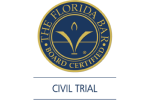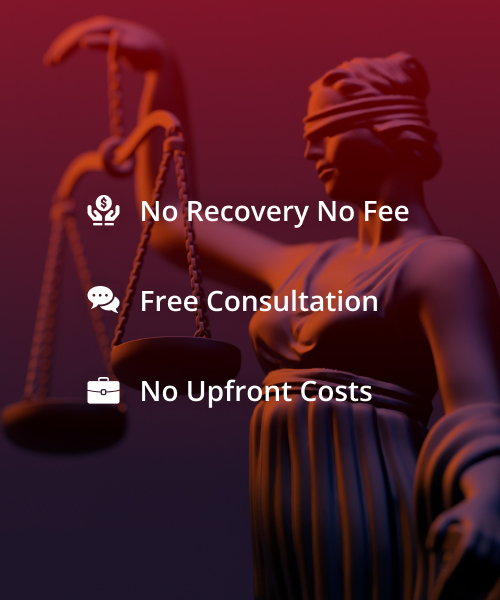- Free Case Evaluation: (305) 577-3777 Tap Here to Call Us
Jeff Davis Teaches Lawyers About Ethics
Personal Injury: 50 Mistakes Insurance Companies Want You to Make
Via Email eventmaterials@nbi-sems.com
Legal Ethics Pitfalls to Avoid
4:00 – 5:00, Jeffrey R. Davis
Competence – Getting in Over Your Head
According to the rules regulating the Florida Bar state, a lawyer should not enter a lawyer-client relationship when the lawyer cannot provide competent and diligent service to the client throughout the course of representation. This professionalism expectation has been adopted by the Florida Bar. Rule 4-1.1 states, “a lawyer must provide competent representation to a client. Competent representation requires the legal knowledge, skill, thoroughness, and preparation reasonably necessary for the representation. In comments to this Rule, the rules further define these terms. Under category of “Legal Knowledge and Skill”, the comment states, “in determining whether a lawyer employs a requisite knowledge and skill in a particular matter, relevant factors include the relative complexity and specialized nature of the matter, the lawyer’s general experience, the lawyer’s training and experience in the field in question, preparation and study the lawyer is able to give the matter, and whether it is feasible to refer the matter to, or associate or consult with, a lawyer of established confidence in the field in question. In many instances the required proficiency is that of a general practitioner. Expertise in a particular field of law may be required in some circumstances.”
A lawyer need not necessarily have special training or prior experience to handle legal problems of a type with which the lawyer is unfamiliar. A newly admitted lawyer can be as competent as a practitioner with long experience. Some important legal skills, such as the analysis of precedent, the evaluation of evidence and legal drafting, are required in all legal problems. Perhaps the most fundamental legal skill consists of determining what kind of legal problems a situation may involve, a skill that necessarily transcends any particular specialized knowledge. A lawyer can provide adequate representation in a wholly novel field through necessary study. Competent representation can also be provided through the association of a lawyer of established competence in the field in question.
Competent representation may also involve the association or retention of a non-lawyer advisor of established technological competence in the field in question. Competent representation also involves safeguarding confidential information relating to the representation, including but not limited to, electronic transmissions and communications.
In an emergency, a lawyer may give advice or assistance in a matter in which the lawyer does not have the skill ordinarily required where a referral to or consultation or association with another lawyer would be impractical. In an emergency however, assistance should be limited to that reasonably necessary in the circumstances, for an ill-considered action under emergency conditions can jeopardize the client’s interests.
A lawyer may accept representation where the requisites level of competence can be achieved by reasonable preparation. This applies as well to a lawyer who is appointed as counsel for an unrepresented person. See also Rule 4-6.2.
Regarding “Thoroughness and Preparation”, the comments provide; “competent handling of a particular matter includes inquiry into an analysis of the factual and legal elements of the problem, and use of methods and procedures meeting the standards of competent practitioners. It also includes adequate preparation. The required attention and preparation are determined in part by what is at stake; major litigation and complex transitions ordinarily require more extensive treatment than matters of lessor complexity and consequence. The lawyer should consult with the client about the degree of thoroughness and the level of preparation required as well as the estimated costs involved under the circumstances.
When it comes to “Maintaining Competence”, the comments state, “to maintain the requisite knowledge and skill, a lawyer should keep abreast of changes in the law and its practice, engage in continuing study and education, including an understanding of the benefits and risks associated with the use of technology, and comply with all continuing legal education requirements to which the lawyer is subject”.
What does all this mean? Should a first-year lawyer take on defense of a tobacco case? Should a lawyer that does criminal work accept a client with a case involving a complex anti-trust matter? Should a real estate lawyer undertake representation of a client with an iatrogenic inter-cranial bleed medical malpractice action? While the obvious answer is probably, no, at least not alone, the rules seem to provide that any lawyer can take on any case provided there is preparation, client disclosure, research, association with competent counsel and an undertaking of all other necessary steps necessary to handle the matter competently. In law, unlike medicine and other professions, there is no type of case a lawyer cannot handle. The question is can it be handled competently? Clearly, getting in over your head is a recipe for failure. In the 1973 movie, “Magnum Force”, Harry Callahan, played by Clint Eastwood, famously stated, “a man’s got to know his limitations”. So does a lawyer.
Getting Entangled in Conflicts of Interest
- Joint-representation (Key takeaway: “Loyalty and independent judgment are essential elements in the lawyer’s relationship to a client”)
- Rule 4-1.7 of the Florida Rules of Professional Conduct provides (Conflict of Interest):
- Representing Adverse Interests. Except as provided in subdivision (b), a lawyer must not represent a client if:
- The representation of one client will be directly adverse to another client; or
- There is a substantial risk that the representation of one or more clients will be materially limited by the lawyer’s responsibilities to another client, a former client or a third person, or by the personal interest of the lawyer.
- Informed Consent. Notwithstanding the existence of a conflict of interest under subdivision (a), a lawyer may represent a client if:
- The lawyer reasonably believes that the lawyer will be able to provide competent and diligent representation to each affected client;
- The representation is not prohibited by law;
- The representation does not involve the assertion of a position adverse to another client when the lawyer represents both clients in the same proceeding before a tribunal; and
- Each affected client gives informed consent, confirmed in writing or clearly stated on the record at a hearing.
- Explanation to Clients. When representation of multiple clients in a single matter is undertaken, the consultation must include an explanation of the implications of common representation and the advantages and risks involved.
- Lawyers Related by Blood, Adoption, or Marriage. A lawyer related by blood, adoption, or marriage to another lawyer as parent, child, sibling, or spouse must not represent a client in a representation directly adverse to a person who the lawyer knows is represented by the other lawyer except with the client’s informed consent, confirmed in writing or clearly stated on the record at a hearing.
- Representation of Insureds. Upon undertaking the representation of an insured client at the expense of the insurer, a lawyer has a duty to ascertain whether the lawyer will be representing both the insurer and the insured as clients, or only the insured, and to inform both the insured and the insurer regarding the scope of the representation. All other Rules Regulating The Florida Bar related to conflicts of interest apply to the representation as they would in any other situation.
- The Florida Rules of Professional Conduct, ethics opinions and opinions of Florida courts provide guidance in these matters. The Florida Supreme Court has issued an opinion specifically dealing with ethical issues involved in representing both driver and passenger(s) in an auto accident. The Court held in The Florida Bar v. Mastrilli, 614 So.2d 1081 (Fla. 1993), that one attorney could not simultaneously represent both driver and passenger in an auto accident where the passenger is pursuing a claim for negligence against the driver. Dual representation in these circumstances would violate Rule 4-1.7(a), supra. This decision echoes an earlier Florida Ethics Opinion 73-2, which reached the same conclusion.
- Similarly, the Court held in State Farm Mutual Ins. Co. K.A.W., 575 So.2d 630 (Fla.1991), that a law firm which had represented driver and passengers against third party insurers and tortfeasors could not later represent the passengers against the driver. The firm was disqualified due to the strenuous objection of a real party in interest, the insurer, even though the driver had a new attorney at the time he was sued and had consented to the passengers’ suit. Id.
- Representing Adverse Interests. Except as provided in subdivision (b), a lawyer must not represent a client if:
- Rule 4-1.7 of the Florida Rules of Professional Conduct provides (Conflict of Interest):
Such conflict issues may not be apparent at an initial consultation with prospective clients. Conflict issues may arise later or be revealed during discovery and litigation. Conflict issues that arise in personal injury auto accident cases can present various fact situations, including the following:
- Scenario 1: Where there are no actual or potential claims by passengers against the driver of the vehicle in which the passengers were injured, one attorney can ethically represent all parties as long as there is sufficient insurance coverage by the third-party tortfeasor to cover the injuries of all injured plaintiffs. If there is not sufficient funding to cover the injuries of all the plaintiffs, one attorney may represent all the parties, with their knowing consent and waiver of conflict, only if all the plaintiffs are able to agree regarding the distribution of benefits/recovery among themselves. Rule 4-1.7(a)(1) and (2), Florida Rules of Professional Conduct.
Individual representation of each of the plaintiffs is advisable to determine the apportionment of benefits obtained from the third-party tortfeasor. If each plaintiff is advised independently, this assures that waivers of conflict are knowing and informed as required by Rule 4-1.7(a)(1) and (2). The parties may agree among themselves to submit to intra-familial arbitration with an independent arbitrator to determine the distribution of benefits on an equitable basis. Independent guardians appointed to represent injured minors can be useful in this regard. The lawyer representing all the claimants as plaintiffs cannot be involved in determining the distribution of the recovery among the various plaintiffs.
- Scenario 2: Where the third-party tortfeasor is making a claim against the driver of a vehicle in which passengers were injured, and this claim is based upon valid objective evidence, one attorney cannot represent both driver and passenger(s). Similarly, in a one car accident, where there is evidence of negligence by the driver, one attorney cannot represent both driver and passenger(s). A conflict exists under Rule 4-1.7(a) and (b), Florida Rules of Professional Conduct; Ethics Opinion 73-2; The Florida Bar v. Mastrilli, supra. As noted in the Comment to Rule 4-1.7, “when a disinterested lawyer would conclude that the client should not agree to the representation under the circumstances, the lawyer involved cannot properly ask for such agreement or provide representation on the basis of the client’s consent.” In determining whether a conflict exists, the attorney should look at the situation as if he or she were representing the passenger(s) alone. If, in that situation, the attorney would sue the driver, then in most circumstances, the attorney cannot represent both driver and passenger(s).
- Scenario 3: Typically, the only exception to the conclusion in Scenario 2 would be when passenger and driver are members of the same family, and the driver is uninsured or otherwise judgment proof. Comparative fault precepts may come into play. Fla. Stat. Sec. 768.81 (1999). Where a conflict of interest exists under Rule 4-1.7, lawyers must be very cautious in undertaking multiple representation. The Florida Bar v. Mastrilli, supra. The situation must be one in which an independent attorney would determine that it is not worthwhile or appropriate to sue the driver because there is no legal or economic basis for a claim under the circumstances. Comment to Rule 4-1.7. The same conclusion would be reached if the third-party tortfeasor’s claim against the driver is bogus and without substantiation in fact. As set forth in Oregon Ethics Opinion 2000-158: There may be situations in which allegations of contributory negligence do not create an actual conflict. The passengers may disagree with the adverse driver’s factual contentions. If the driver and the passengers are closely related, the passengers may not wish to pursue intra-family claims. Assuming that these decisions not to pursue claims are made voluntarily and without influence arising from the lawyer’s obligations to the driver, there is no actual conflict between the clients. Again, knowing consents and waivers must be obtained from all parties in these circumstances. It may be better practice for these consents to be obtained in writing and for the parties to be given the opportunity to consult with independent counsel before waiving an actual conflict.
- Scenario 4: Where the driver and passengers are all injured, but evidence shows that the plaintiff driver was partly at fault or at least a substantial question is raised as to the fault of the plaintiff driver under objectively valid evidence obtained, such that an independent attorney would advise the passenger to sue the driver, there exists a Rule 4-1.7(a) conflict between the passengers and driver. Under these circumstances one attorney cannot represent both driver and passengers, even with the consent of the clients involved. Rule 4-1.7(a) and Comment; Mastrilli, supra.; Texas Ethics Opinion 500, Oregon Ethics Opinion 2000-158. The same result may be obtained if the driver was a former client of the attorney representing the passengers in the accident. Rule 4-1.9(a) and (b), Florida Rules of Professional Conduct.
- Scenario 5: When passenger and driver are members of the same family and the driver is underinsured, uninsured or otherwise judgment proof, one attorney can represent all parties against the driver’s uninsured/underinsured motorist policy and against the tortfeasor if the situation is such that an independent attorney would determine that it is not worthwhile or appropriate to sue the driver because there is no legal or economic basis for a claim under the circumstances. Comment to Rule 4-1.7. The same result would be obtained if the tortfeasor’s claim against the driver is bogus and without substantiation in fact. Oregon Ethics Opinion 2000-158, supra. Knowing consents and waivers must be obtained from all parties in these circumstances. The attorney for the passengers may wish to have independent guardians appointed for any minor children to make sure that their interests are properly and independently represented in these circumstances. All parties, including the guardians for any minor passengers, should be given the opportunity to consult with independent counsel before waiving an actual conflict.
- When conflict determinative facts do not come to light until after an attorney has already begun to represent both driver and passengers, remedial measures may be required. If discovery reveals, for example, that a non-waivable conflict exists between co-clients, the attorney may be required to withdraw from representation of both driver and passengers because of the direct conflict between them. Rule 4-1.7(a); Rule 4-1.16(a) and (d), Florida Rules of Professional Conduct; Florida Ethics Opinion 95-4. Even if the attorney had only brief meetings with both driver and passengers, representation may be deemed to have begun under pertinent case law. In Florida, a prospective client’s subjective belief that his or her meeting with an attorney (in person or by telephone) was a meeting seeking and receiving legal advice, may create an attorney client relationship, if the client’s belief was reasonable. Dean v. Dean, 607 So.2d 494 (Fla. 4thDCA1992), review dismissed, 618 So.2d 208 (Fla.1993). The test is not whether a fee was paid, or an engagement agreement signed, but whether the client reasonably believed that he or she was consulting an attorney seeking legal advice. Garner v. Somberg, 672 So.2d 852 (Fla. 3d DCA1996).
- The Florida Bar has numerous ethics opinions regarding joint-representation and the potential conflict of interests they create. See Opinions 87-1, 96-2, and 95-4 for additional information. Joint representation agreements should always be in writing and conflict waivers should be in simple yet explicit detail with a proviso indicating that the client has been advised to seek the opinion of an independent attorney regarding the agreement. Conflict of interests in representation can arise under a variety of scenarios that well exceed the scope of this seminar. The main emphasis is transparency with the clients; clear, plain statements in the representation agreement and signed knowing waivers by the clients.
Failing to Manage Client Expectations
The type of personal injury claims that can be asserted truly runs the gamut. Our firm has handled dog bite cases, bicycle and skateboard injuries, scooter injuries, pharmaceutical malpractice claims, premises liability claims, negligent hiring claims, negligent retention claims, claims against airlines for unlevel ramps or falling baggage, domestic animal injuries (horse bite), injuries from insect or rodent infestation, injuries from defective construction or building materials, construction accidents, mold claims and many more. In every one of these claims, the initial interview and assessment starts with an evaluation of the mechanism of injury, the extent of injury, and the potential for financial recovery. Unfortunately, some of the worst damage cases involve uninsured and/or uncollectible Defendants. A careful analysis of liability, damages and collectability are essential to providing your client with realistic expectations and in making case acceptance decisions.
Every case begins with the client interview. Every injury case mandates a thorough and complete claims and health history evaluation of the Plaintiff. Not everyone remembers every doctor they’ve ever seen in their whole life. Using such tools as background searches, requesting health insurance claims histories, automobile claims histories and family/spouse discussions, often yield valuable information about your client’s background. Primary care provider records should always be requested. In female patients, Ob/Gyn records often provide valuable information as well. In automobile accident and fall down cases, we request our client’s eyecare records from their ophthalmologist, optometrists, and other vision centers. Prior arrest records, bankruptcies, and other litigation searches are essential in the bigger cases. We conduct discovery on Defendants, presuit using online searches, asset search firms, court filing records, property ownership records and other readily available materials. Frequently, Facebook, Instagram and other social media platforms provide a treasure trove of information concerning potential Defendants. Online Google searches often turn up valuable information as well. When your client is claiming work loss due to the accident, get their employment and payroll records. Make sure that you can substantiate this part of the claim. For the self-employed, get their tax returns and business records.
Never underestimate the value of speaking with your client’s family members and significant others in developing further information about the claim prior to filing suit. Information is your most valuable tool and sometimes the extra step of speaking to the spouse, family member or significant other yields important case-related information. No interview or investigation is complete without a detailed social media search. It is almost guaranteed that the other side will do this once the claim is made.
During the course of the case, usually once medical records or other case materials are received, I have a conference with the client to bring them up to date. I try to get them to understand how the defense sees their case. This can be gleaned from the defenses’ responses to discovery, affirmative defenses, and correspondence and communications with defense counsel. It is important that the client understand what the defense view is in order to help you to refute it. Sometimes medical records reveal prior claims, injuries or other issues in the case that prove either insurmountable or case limiting. When something is discovered in a medical record, or discovery that reveals a significant case problem, I write to the client about it in a letter marked “attorney/client privileged materials”. Alerting your client to a problem as soon as you learn it prevents the uncomfortable conversation at mediation with the client beginning “why didn’t you tell me about this before?”. (Answer, “I did and here is the letter.”) I have found that literally no case – not one – ends up turning out the way it started. Things come up, things change and client expectations, case evaluations and case issues need to be thoroughly documented and provided to the client. Remember, your client is your partner in every case and should be treated as such.
Some of the areas where lawyers find themselves in rough waters with client’s concerns making settlement demands. Especially in injury cases, it’s a lawyer’s job to educate the client about the realities and value of their case. In cases worth well in excess of the available insurance coverages, especially a case with an uncollectible Defendant, clients often have difficulty accepting the reality of their situation. In Florida, where the laws truly favor the debtor, it often takes a good deal of time to educate the badly injured client on why they need to consider accepting such a small sum of money for their case. It is a good practice to obtain a client’s written authorization before making the settlement demand or at least confirm the conversation with the client in writing.
Offers and counteroffers can be a tricky business. Many times, an injured client reacts to a lowball offer with understandable anger and indignation. Managing the client’s understanding of the negotiation process can require patience and good people skills. Often using case examples, verdict searches, jury verdict reporting and other literature that shows case values helps a client understand what their case may be worth and how to respond to a low offer.
Mediation and arbitration negotiations frequently make a client feel as if they are a commodity and not a person. Many clients have explained to me that the bidding and bargaining that takes place at mediation is dehumanizing. Explaining to the client that it is the nature of the insurance carrier’s business to adjust claims can help prepare a client for this experience. Most clients want to be involved in the negotiation process and discussing such techniques as bracketing, messaging, midpoints and other features of case resolution helps make them partners in the potential resolution process.
Many law firms utilize video presentations to manage client’s expectations of what a deposition, compulsory medical examination and mediation may look like. These of course are supplemental to actual client preparation however are helpful aids in giving clients a “heads up” about an upcoming case event. There are materials available for purchase from several Bar associations and legal vendors plus there are numerous YouTube videos out there as well.
Managing the clients’ expectations at trial is the most important preparation. On occasion, we actually take clients to the courthouse to show them the courtroom where their trial will take place. We show them where they will be seated, educate them on courtroom behavior and proper attire. We give them a timeline of what to expect in terms of the length of the trial, the days they will need to make arrangements for transportation, work absence and child care and similar details that will hopefully lower their stress level. Client management involves more than just competent representation; you are the client’s advocate, evaluator, negotiator, counselor and often, hand-holder. Failing to manage your client’s expectations at any phase of the case can lead to a host of unwanted and unnecessary problems.
Mishandling Client Funds
In personal injury cases, funds paid by defendants are almost always paid to the client and lawyer jointly. These funds are deposited into the lawyer’s trust account. Many times, there are competing claims to these funds. A lawyer has an obligation to prepare a closing statement or settlement statement that itemizes the allocation of these funds. While there is no exact form for this closing statement, most law firms divide categories of payments and disbursements on the statement. Typically, the closing statement reflects the case style and then lists the gross settlements or judgments. Next is any additional funds received from such sources as first party benefits such as private accident or disability coverage, unallocated PIP or medical payment benefits or third-party benefits such as MedPay coverages. Typically, no fees are taken on these portions of the recovery.
The next segment of the closing statement usually details the attorney’s fees including arrangements with co-counsel or attorneys that have liens. The next category is often the breakdown of medical bills and then case costs. Attorneys are encouraged to give detailed descriptions of case costs and not offer general categories. There should not be a “flat fee” for expenses such as general office expenses or case opening costs as such charges are prohibited by the Florida Bar. Overhead should not be charged to the client.
When medical bills and health insurance liens have been reduced, this should be identified on the closing statement as well. The client’s net proceeds should be delineated at the bottom of the closing statement and, if a structured settlement or annuity is being utilized, statement of future payments is often set out to avoid confusion as to present versus future value of the client’s net proceeds.
The client’s closing statement should be signed by the attorney (including participating attorney’s) and client before funds are disbursed.
- Conflicts of interest in settlement funds. According to the Florida Bar Ethics Opinion, 02-4 from April 2, 2004 “there is no bright line rule that can address all situations when third person claim an interest in settlement proceeds”.
The attorney cannot assist the client in unlawfully avoiding statutory liens or Court Orders involving funds. Examples are child support award Orders, IRS liens, or Sanction Orders.
The most frequent lien issue to arise in the realm of personal injury cases is the Letter of Protection. An attorney that has entered into a letter of protection with a client’s health care provider is under contractual obligation to resolve this letter of protection before disbursing funds. Frequently, a conflict arises between the attorney, the healthcare provider and the client. The attorney cannot unilaterally decide the outcome of that conflict. Unless an agreement is reached with all parties, the attorney cannot be the arbiter of the outcome. If no result can be negotiated between the client and the healthcare provider that holds the letter of protection, the attorney is ethically obligated to deposit the funds in the Court registry for judicial involvement in determining the outcome of the obligation. Attorneys who unilaterally decide to “pay their client and let their client resolve it” will usually end up with a Bar complaint or lien impairment lawsuit by the provider. Liens can also take the form of client funding assignments, client loans from outside parties, bank loans and other lawful encumbrances. Again, it is not the attorney’s role to decide the outcome of competing claims when lawfully asserted. My firm has utilized the filing of Interpleader Actions in order to get judicial determination and Court Orders as to the resolution of competing interests to settlement proceeds. According to the Florida Bar, the lawyer may assist the client by providing advice as to the client’s rights and obligations and by negotiating with the third party on behalf of the client. However, a lawyer can never take action that is adverse to the client and, the lawyer is advised to give the client the opportunity to seek independent legal advice.
Rule 5-1.1 of the Rules Regulating the Florida Bar pertains to notice of receipt of trust funds; delivery; accounting. Prompt notification by the attorney to all parties holding an interest in this res is required. Additional ethical rules that are found elsewhere come into play with Trust account funds. See Rule 4-1.7, pertaining to the lawyer’s obligation to keep the client informed of actual or potential problems arising during representation and Rule 4-1.4 pertaining to the lawyer’s ethical duty of competence. With regard to the disputes with medical providers over funds, the comment to Rule 5-1.1 is instructive: “A lawyer may have a duty under applicable law to protect such third-party claims against wrongful interference by the client, accordingly, may refuse to surrender the property to the client. However, a lawyer should not unilaterally assume to arbitrate a dispute between the client and third-party, and where appropriate the lawyer should consider the possibility of depositing the property or funds into the registry of the applicable Court so that the matter can be adjudicated”. The Florida Bar ethics opinions on letters of protection, competing claims to client funds and similar ethical challenges are available for guidance. Suffice to say, one of the most common Bar grievances filed by third-parties against attorneys concerns disputed trust funds. A lawyer needs to walk the line on competing claims to client funds carefully.
The vast majority of ethical issues, grievances and bar sanctions against lawyers’ concern handling client funds. The trust account is highly regulated and subject to rigorous accounting requirements in addition to the highest ethical obligations. A lawyer’s management of a client’s funds is on par with the strict requirements of preserving client confidentiality. It is that important!
In most law firms, the simple rule is, “every penny must be accounted for and client funds must never be comingled with a lawyer’s operating or personal funds”. Most law firms have an accountant and/or a bookkeeper (or both) who regularly monitor and audit the trust account in addition to the managing attorney. Most law firms also have limited trust account check writing ability and some even use two-signature checks on trust accounts to avoid any accidents or impropriety.
Funds belonging to a client are not always clearly demarcated. When a settlement is received and gross funds are deposited in a trust account, some of those funds may belong to vendors, healthcare providers, assignees or lienholders. While technically they are all under the umbrella of client funds, a careful division must be made and approved by the client prior to disbursement.
Missed Deadlines and Other Due Diligence Oversights
Every case is filled with deadlines, the statute of limitations, cut-offs and other time-sensitive matters. Lawsuits need to be filed within the statute of limitations. Insurance demands need to be made in the terms set out in the insurance policy. Preservation of evidence letters need to be timely in order to prevent potential spoliation. Trial orders need to be complied with, case management deadlines need to be complied with and it goes on and on. The calendaring of legal events is supremely important. A quick checklist is no substitute for a deep dive into all of your case-related deadlines and time limits.
Initial notice letters to insurance companies, premises owners and operators should also contain a request for the surrender of all medical insurance coverages or MedPay. Oftentimes, these provisions in insurance policies have time limitations.
Disclosing Confidential Client Information
The Florida Evidence Code, 90.502 sets out lawyer-client privilege. The exceptions to this statute predominantly reside with the client. The rule defines when no lawyer-client privilege exists. In preparing the client for deposition, I almost always advise them that the only exception that allows a lawyer to direct the client not to answer a question has to do with attorney-client privilege. The Supreme Court of Florida decided Worley v. Central Florida Young Men Christian Ass. Inc., on Apr. 13, 2017. In its holding the court stated, “The attorney-client privilege is the oldest confidential communication privilege known in the common law.” See Upjohn Co. v. United States, 449 U.S. 383, 389 (1981). The court cited to the Florida Evidence Code, 90.502, and reiterated, “A client has a privilege to refuse to disclose, and to prevent any other person from disclosing, the contents of confidential communications when such other person learned of the communications because they were made in the rendition of legal services to the client”. In Worley, the court held that defense counsel could not compel the Plaintiff to disclose how he was referred to a physician when it was by advice of counsel. In my office, it is standard practice when I ask clients to keep a journal or record of their medical complaints or care to simply address it to me- then it becomes a client-attorney communication. Attorney-client communications can take the form of conversations, written communications, recorded communications and digital communications. While Plaintiffs may be asked what they did to prepare for their deposition, they cannot be asked as to any communication they had with their counsel. It is the lawyer’s job to educate their client as to the power and scope of this confidentiality. It is also important that the lawyer advise the client never to reveal conversations or communications to third-parties since that would essentially nullify the privilege. For this reason, I do not have third parties sitting in on attorney-client meetings.
- Rules of Professional Conduct
- Rule 4-1.6 addresses confidentiality of information. A client can give informed consent for certain disclosures. There are times when a lawyer must reveal information and there are other times when a lawyer may reveal information. The rules also consider such matters as inadvertent disclosure of information and limitations on that disclosure. Familiarity with Rule 4-1.6 of the Rules Regulating The Florida Bar is important. On Feb. 1, 2011, The Florida Bar issued an Ethics Opinion 10-3. While the topic of the opinion pertained to discreet aspects of lawyer’s ethical obligations regarding the requests for confidential information of a deceased client, the detailed opinion provided great insight into this area of law. Confidentiality not only applies to communications but to equipment and electronic media as well. Although somewhat dated, Ethics Opinion 10-2 decided in Sept. 2010, deals with storage media containing confidential information. When it comes to attorney-client privilege, the best answer is “there’s not much you can say”.
A few years ago, while representing a young lady who suffered a significant injury at a house party, the defense sent over fairly comprehensive social media discovery. Both the young lady and her parents were horrified at the requests. Some of the “shock” came from the Defendant’s discovery potentially providing the young lady’s parents with revelations and insights as to what their daughter was posting online. Believe it or not, within days of receiving the discovery requests, I received instructions from the parents (likely after some spirited urging from their daughter) to dismiss the case with prejudice. Discovery can be personal and revealing. Clients need to understand when they embark upon litigation, especially personal injury litigation, discovery will be invasive. There is no getting around that. Clients will need to essentially open their medical records, financial records, online presence, school and/or work records, insurance claims records, and litigation and criminal record history. In almost every case, something is “found” that may have been forgotten or overlooked. Many times, especially with medical records, things prove embarrassing or uncomfortable. In cases with female clients that have had plastic surgery, the photographs provided as part of the medical records are often highly private. Psychiatric and psychology records or records of mental health records or marital counselors often contain subject matter that is extraordinarily personal and confidential. All of these things need to be stressed to the clients in advance. There are certain records and materials that a client will never want third-parties to see. Even with confidentiality agreements, and court-ordered limitations, sometimes the protections available to a client are just not enough. This conversation needs to take place before the subpoenas go out. You, as the counselor, need to understand what needs to be objected to or what needs to be off limits. Here, motions in limine, motions for protective order and objections need to be filed in accordance with client directives.
Social media – guidance and advice: Invariably, especially with claimants under 40, an online presence can be a minefield in litigation. Frequently, I have had my client’s social media injected in the litigation. From the very first time I shake hands with a client, I explain the importance of regulating and being mindful of social media postings. I even have the client sign a separate social media warning statement. There is a fine line however between a lawyer counseling a client about social media and instructing a client to remove or delete materials. The bridge too far is when a lawyer instructs a client to remove or delete social media since it is tantamount to potential evidence spoliation. There are numerous Bar journal articles and other case materials that should be consulted here.
In Nucci v. Target Corp., 162 So. 3d 146 (Fla. Dist. Ct. App. 2015), Florida’s 4th District Court of Appeal permitted the discovery of photographs from social media accounts and stated that social networking sites can provide a “treasure trove” of information in litigation. Defendant’s discovery requests were in the form of Interrogatories and Request for Production. The court compelled an answer to many of them. In EEOC v. Simply Storage Mgmt. – 270 F.R.D. 430 (S.D. Ind. 2010), the court held that the discovery requests for social media profiles for three years was narrowly tailored because the requests were limited in time and the time period was relevant to the claim. In Mackelprang v. Fidelity National Title Agency of Nevada, Inc., 2007 WL 119149, 8 (D. Nev.2007), the court denied a motion to compel the content of private MySpace messages because such request covered too broad of a spectrum of information and essentially constituted a fishing expedition. Clearly, courts disagree as the extent of discoverable content of social media. In Davenport v. State Farm Mut. Auto. Ins. Co., 2012 WL 555759 (M.D. Fla. Feb. 21, 2012), the Middle District held that most courts agree that social networking content is neither privileged nor protected by any right of privacy. One decision said that asking for a party’s entire Facebook profile without a limitation of time or content is not narrowly tailored. See Levine v. Culligan of Fl. Inc. 2013 WL11040 (Fla. 15th Cir. CT. Jan. 29, 2013). In April of 2018, Judge Bronwyn Miller of the 3rd District Court of Appeal wrote an informative article for The Florida Bar; “A Prolific Landscape: The Admissibility of Social Media Postings”, (Vol. 92, No. 4, Apr. 2018, Pg. 8). Back then while Judge Miller was still a trial court judge, social media discovery was fairly new and surrounded with uncertainty. It was just assumed that if your postings were public, with no privacy limitation, they were fair game. Since then, lawyers have found themselves in jeopardy, both with the courts and the Bar, for instructing the client to delete existing material. Certainly, it is proper to instruct a client not to post case-related materials, or anything for that matter, that would be potentially harmful. That is common sense and good advice. The rub comes in when you instruct a client to take something down or otherwise delete it. A review of your client’s social media is important. A discussion with your client about social media is essential.
Lies, Omissions, and Misdirection
Truthfulness and Candor. No moral qualifications for Bar membership are more important than these, according to the Florida Board of Bar Examiners. Mark Twain famously said, “If you tell the truth, you won’t have to remember anything”.
The Rules Regulating the Florida Bar, 4-1.2(d) address criminal or fraudulent conduct. A lawyer shall not counsel a client to engage, or assist a client, in conduct that a lawyer knows or reasonably should know is criminal or fraudulent. The question that seems to always come up, especially in the representation of Plaintiffs in injury claims is where does the line get drawn? When is a statement made about a client’s actions, injuries or damages an opinion vs. a lie? The term “puffing” is the practice of making exaggerated commendations, especially for promotional purposes. Lawyers have a tendency to puff up or inject opinion into statements containing the framework of facts. Puffing is legal, intentionally misstating or lying is not. Adjectives can be used to describe the qualities of someone or something independently or in comparison to something else. An adjective is a word that describes a noun or a noun phrase. A well-worded demand letter or an opening or closing argument, sprinkled with descriptive and enhancing adjectives are usually understood to be an attorney presenting their case in the light most favorable to their client. That’s a lawyer’s job – but what is too far? A lawyer crosses the line when a false and intentionally misleading statement is being made to gain advantage. That line is crossed with a lawyer that intentionally claims their client suffered an injury that they know did not occur; that suffered a damage they know to be false, or they suffered a harm or loss they know did not occur. Most adjusters understand full well that when a lawyer sends a settlement demand package and asks for a specific sum of money, that sum is normally a “best day” scenario under most circumstances. Unless there is a set policy limit or other finite number, most settlement projections are optimistic at best and unrealistic in many instances. This is not a lie or a misleading statement but is an opinion or an objective designed for positioning a client’s claim. Statements of position made at mediation, arbitration and in legal pleadings need to be factual. Pain & suffering, loss of the capacity for the enjoyment of life, inconvenience, shame, humiliation and other non-economic damages are subjective. There is no hard and fast statement of fact that necessarily must accompany these claims. But remember, insurance adjusters and defense counsel are trained to be the ultimate skeptics. Oftentimes, the plain, straightforward approach of delivering objective, carefully delineated and thoroughly documented claims have a greater impact and are worth more money than some florid or extravagant claims. Under Rule 4-3.3, Candor Toward the Tribunal, the rule provides that a lawyer shall not knowingly:
- Make a false statement of fact or law to a tribunal or fail to correct a false statement of material fact or law previously made to the tribunal by the lawyer;
- Fail to disclose a material fact to a tribunal when disclosure is necessary to avoid assisting a criminal or fraudulent act by the client;
- Fail to disclose to the tribunal legal authority in controlling jurisdiction known to the lawyer to be directly adverse to the position of the client and not disclosed by opposing counsel; or,
- Offer evidence that the lawyer knows to be false. A lawyer may not offer testimony that the lawyer knows to be false in the form of a narrative unless so ordered by the tribunal. If a lawyer, the lawyer’s client, or a witness called by the lawyer offered material evidence and the lawyer comes to know of its falsity, the lawyer shall take reasonable remedial measures including, if necessary, disclosure to the tribunal. A lawyer may refuse to offer evidence that the lawyer reasonably believes is false.
A similar set of regulations exist in almost every state and Federal jurisdiction throughout the country. Clearly, there is a lot to unpack here and certainly, an entire and separate seminar can be directed just at this cannon of ethics. Suffice it to say that a false statement can be one that is directly made or one that is made by omission. I recall when I first began practicing law watching a friend try a case. On the very day of his closing argument, the appellate court issued an opinion that essentially took away the cause of action he was pursuing. My friend did something that was incredibly hard but absolutely mandated. He stood up in court that morning and said,
“Your Honor, I need to bring a new appellate decision to the court’s attention”.
Back then, before computers, we printed cases out on paper. My friend handed the case to the Judge and to opposing counsel and stood silently at the lectern. The judge looked up after reading the case and said,
“Counsel, you know what this decision mandates that I do?”
The lawyer responded, “Yes your Honor, I do”.
“I have to dismiss your case but I want to commend you on being an ethical and consummate professional”. He announced to the open court, “Folks, the lawyer standing in front of the bench is an example of how all lawyers should practice. He demonstrated candor to the Court and his opposing counsel and followed the law and the rules. This ladies and gentlemen is how I wish all lawyers would practice and counselor, I truly commend you and thank you”.
My friend lost the case but won the judge’s respect and the respect of his opposing counsel.
Representations by a lawyer made for litigation are technically different than representations made by a lawyer based upon personal knowledge or on the basis of a reasonably diligent inquiry. (See Rule 4-3.1) As the comments to the Bar rules note, there are circumstances where failure to make a disclosure is the equivalent of an affirmative misrepresentation. Legal argument based on a knowing false representation of law constitutes dishonesty toward the tribunal. There are numerous remedial measures a lawyer can take following the introduction of false evidence and misrepresentations/omissions. When a lawyer discovers that a client has been making false or misleading allegations, statements or claims, the lawyer has a duty to affirmatively counsel the client to allow correction. If the client refuses to allow the correction of these falsehoods, a conflict of interest has now arisen in the lawyer’s representation and the lawyer should withdraw from the case. There are multiple rules contained within the Rules of Professional Conduct on this topic. The list below is not designed to be comprehensive however, illustrates the multitude of scenarios where lies, omissions and misdirection are addressed:
- Rule 4-1.2; prohibits a lawyer from assisting a client in conduct that the lawyer knows or reasonably should know is criminal or fraudulent.
- Rule 4-3.4(b); prohibits a lawyer from fabricating evidence or assisting a witness to testify falsely.
- Rule 4-8.4(a); prohibits a lawyer from violating the Rules of Professional Conduct or knowingly assisting another to do so.
- Rule 4-8.4(b); prohibits a lawyer from committing a criminal act that reflects adversely on a lawyer’s honesty, trustworthiness or fitness as a lawyer.
- Rule 4-8.4(c); prohibits a lawyer from engaging in conduct involving dishonesty, fraud, deceit or misrepresentation.
- Rule 4-8.4(d); prohibits a lawyer from engaging in conduct that is prejudicial to the administration of justice.
- Rule 4-1.6(b); requires a lawyer to reveal information to the extent the lawyer reasonably believes is necessary to prevent a client from committing a crime.
- Rule 4-3.3(a)(2); requires a lawyer to reveal a material fact to the tribunal when disclosure is necessary to avoid assisting the criminal or fraudulent act by the client.
- Rule 4-3.3(a)(4); prohibits a lawyer from offering false evidence and requires a lawyer to take reasonable remedial measures when false evidence has to be offered.
- Rule 4-1.16; prohibits a lawyer from representing a client if the representation will result in a violation of the Rules of Professional Conduct or law and permits a lawyer to withdraw from representation if the client persists in a course of action that the lawyer reasonably believes is criminal or fraudulent or repugnant or imprudent.
- Rule 4-1.16(c); recognizes that not withstanding good cause for terminating representation of a client, a lawyer is obligated to continue representation so ordered by a tribunal.
“The truth doesn’t cost anything, but a lie could cost you everything”. (a quote from Kushandwizdom)









